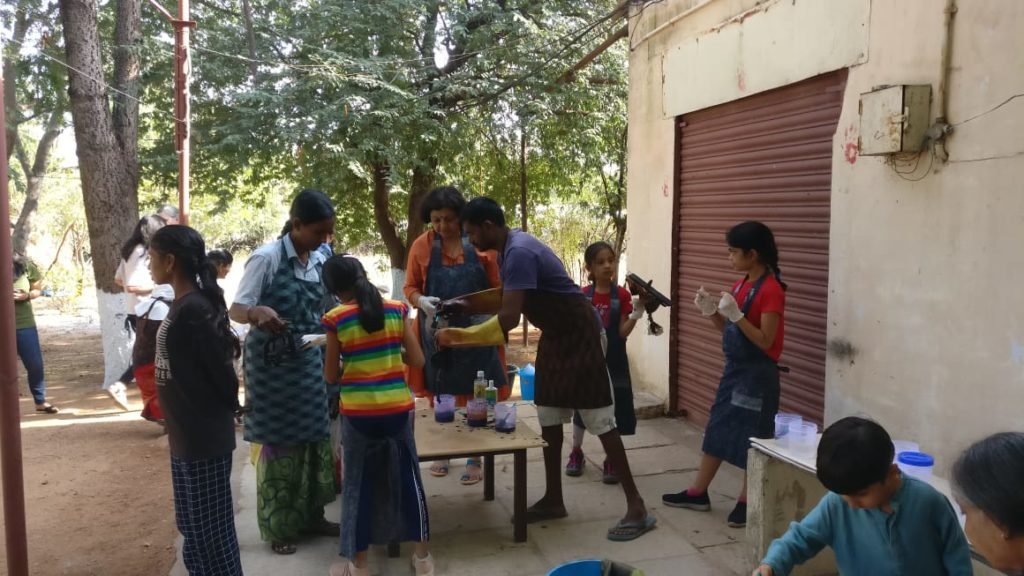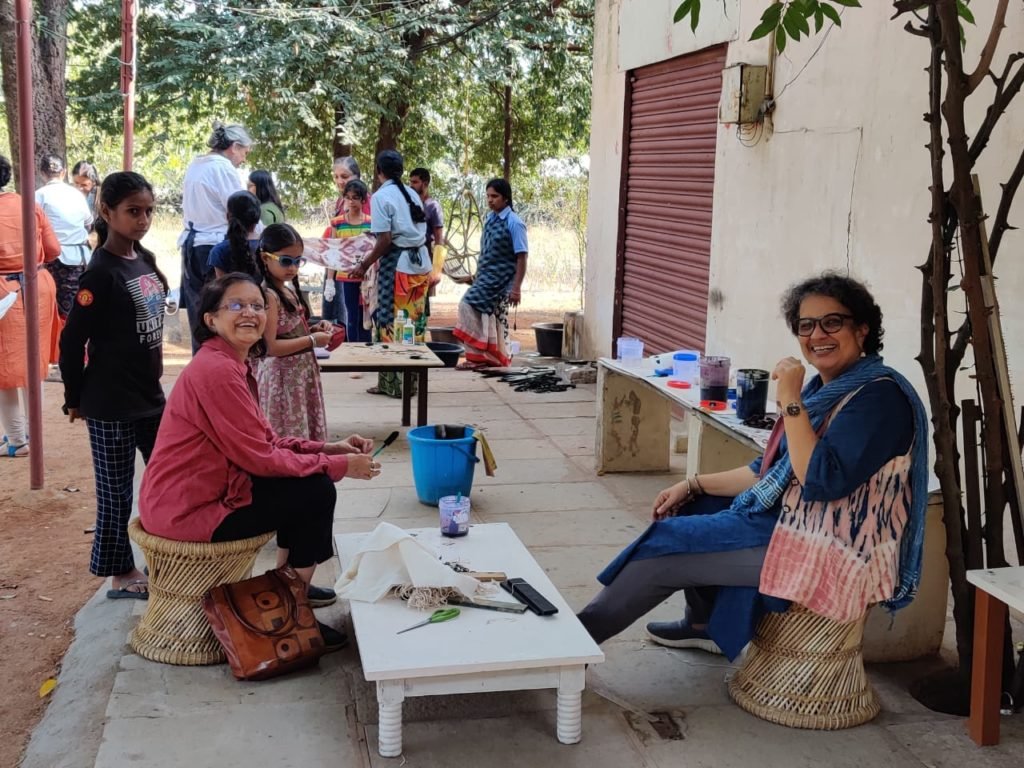Have open spaces become all the more enticing after the lockdown and pandemic? Mallik Thatipalli drops into a lush farm just an hour’s drive from Hyderabad and spends the day amidst trees and weaves…
Creative Bee is a popular design studio in Hyderabad which is known for its sustainable and signature textiles. For almost two decades, their designs were processed at their natural dye farm, an hour’s distance from the city. Set amidst a three and half acre mango orchard, it provides the perfect foil for artisans to get their creative juices flowing.
It was during the lockdown, when the retail business was badly hit that the founder of Creative Bee, Bina Rao hit upon the idea of visits to the farm, not only to get away from the monotony of working from home but also to spend time in open spaces while understanding and appreciating the intricate process of weaving. Rao, an alumnus from National Institute of Design, Ahmedabad says, “We started doing this for additional modes of revenue as we didn’t lay off any employees and the pandemic resulted in a dip in our sales. The idea was to understand the process behind the clothes we wear, and I must say that the response has been beyond terrific.”

While earlier the farm was only open to international textile students who enroll for short courses to learn the know-how of natural dyes, block printing and weaving, now with people allowed, a wide range of visitors have been thronging the premises – from a recent visit by IKEA’s management to handloom aficionados.
From batik work to wooden block printing and pottery, the visitors can choose one activity to take part in. The farm is home to three families of skilled artisans and the visitors are guided by them as they put their creativity to good use. The textiles are produced with no electricity and no pollution to water, air, or ground.
Creative Bee incorporates both Indian and International techniques, from Batik work which is popular in Indonesia to the Japanese artform of Shibori (via which textiles can be treated in 15 different ways), it is an opportunity to understand and explore these rich crafts. One can create a stole using the shibori tie and dye technique, dabble in wood block printing on fabric or understand how the ancient craft of Ikat works. There is a potter’s wheel too, for those who want to get their hands dirty, literally!

Away from the hustle and bustle of the city, a day spent at this farm transports you to a different world, one where bird song and the weaving machines are the only sounds you can hear. For those looking for an eclectic outing, it doesn’t get any better than this.
Presently the farm is open for visits only on Saturdays and visitors need to book three days in advance.
The experience visit starts from 11 am and ends at 5 pm
11 am to 11.30 am: Brief introduction and Tea/Coffee
12 pm to 1.30 pm: Demo of any one craft chosen by you (Pottery, Ikat, Block Print, Shibori or Batik)
1.30 pm to 2.15 pm: Simple, home-cooked vegetarian lunch
2.30 pm to 4 pm: You can indulge in the hands-on experience of any technique chosen by you, followed by evening tea
Location: Near Ghatkesar
Tel: 90638 04035
Price: Rs 1770 inclusive of taxes, per person.





























